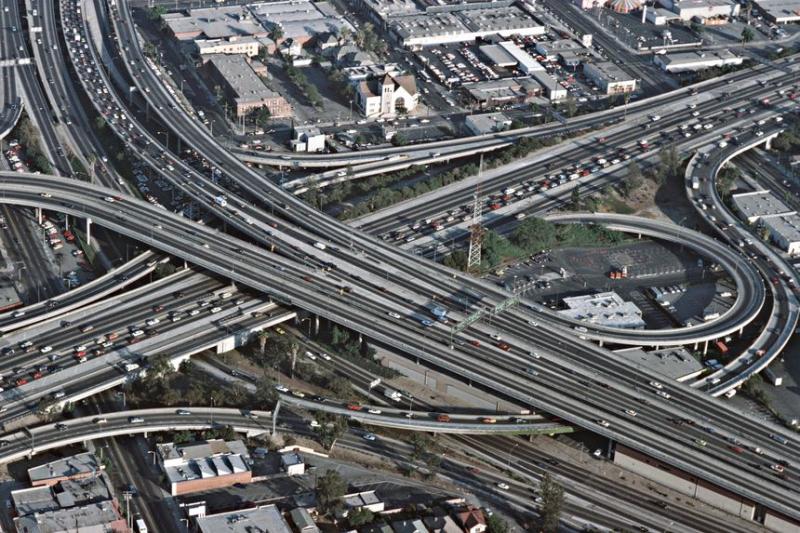'Everything Now' Review: California Dreaming
By: Marc Weingarten (WSJ)



What is Los Angeles? Depends on where you look. Some of the greatest chroniclers of the city's civic life, from Upton Sinclair in the 1930s to Joan Didion in the 1960s, have chosen their own patch of land to cover. Ms. Didion is the most frequently quoted diviner of Los Angeles's soul these days, but she decamped to Manhattan a long time ago, and the city is no longer the citrus-fragrant, deeply flawed "golden dream" that she wrote about in her seminal essays.
To drive around Los Angeles in 2021 is to witness a once-great city that has lost its moorings. What are we to make of a state with the fifth-largest economy in the world that hosts, in Los Angeles alone, America's second largest homeless population, the tented encampments scattered like spores all over the city's amoebic topography? An endless loop of fire, flooding and drought that has become as familiar as the city's smog-pink sunsets.
In his deeply empathetic and insightful book "Everything Now: Lessons From the City-State of Los Angeles" (MCD, 254 pages, $27), Rosecrans Baldwin opts not to grasp for some unifying theory of Los Angeles that will sort it all out for readers. For Mr. Baldwin, who has previously published a novel and a memoir of living in Paris, Los Angeles is "less of a city than a country. Less of a community than a climate. Less of a metropolis than an eighty-eight-city nation-state."
So how does the author wrap his arms around this complex city-state? By delivering poignant miniatures of individuals who make it their business to subvert L.A.'s stasis and apathy—the prevalent view that the individual is helpless in the absence of the state. In Mr. Baldwin's world, the individual is the only change agent that works. "Everything Now" gives us dark glimpses of an impending apocalypse—the ever-expanding homeless population, therecurrent eco-cataclysms—then introduces us to a handful of resilient Angelenos doing their best to buck the tide of indifference that seems to have crept into the political and social life of the place like a toxic marine layer.
The author ducks into a hotel ballroom near the LAX airport to partake in a self-help seminar hosted by Mastery in Transformational Training (M.I.T.T.), a highly lucrative exercise in checkbook self-actualization founded by a Dutch woman named Margo Majdi. Turns out M.I.T.T. was born from the wreckage of a shady enterprise called Lifespring. No matter: Majdi rebranded it as M.I.T.T. and turned it into a highly lucrative business. Mr. Baldwin introduces the possibility that M.I.T.T. is, in fact, something like a cult. But for Mr. Baldwin it's beside the point. Organizations like M.I.T.T. will always have a place in a city that is estranged from itself, where alienated residents fear the big dissolve and fade-out into oblivion, the fear that they are, in the end, "just another human in their apartment at the end of the day." A city without a center can endure only if its citizens find connection within its 503 square miles. L.A. can get mighty lonely without it.
Lonelier still are L.A.’s 60,000 or so homeless residents, whose diaspora has spread so far and wide that homelessness has become the burning issue in the run-up to the recall election of California Gov. Gavin Newsom in September. Mr. Baldwin encounters Suzette Shaw, a former San Francisco tech-industry worker who, through a few quick twists of rotten luck, found herself on Skid Row in the early years of this century. An Arizona transplant who is inured to heroin shooting galleries and people dying in the street, Ms. Shaw over time figured out how to finance a successful outreach program using her meager food-stamp benefits, one week at a time. “My advocacy was birthed from pain,” Ms. Shaw tells Mr. Baldwin, “but people don’t like to talk about pain, the perseverance through pain. That would be giving me too much credit.” Don’t demonize, in other words. Just listen.
A great number of L.A.’s Skid Row inhabitants are from other forbidding zones of containment across California’s southern border with Mexico. The journey across the desert to Los Angeles is treacherous, the final destination often another circle of hell. James Cordero and Jacqueline Arrelano are volunteers who scout migrant trails in the desert near the southern border and leave stores of food, water and clothing for those who might need it. “In the desert, immigration didn’t feel like a topic, something to be argued about,” writes Mr. Baldwin. “The border felt like . . . a battle site, a place where politics had failed.”
The business of Hollywood is another kind of gauntlet. Actress Jen Tullock is one of the countless show-business aspirants in L.A. who persist despite having to negotiate a business landscape with no signposts, where no safety net catches you when you fall, and success, when it comes, is uncertain or evanescent. Ms. Tullock sells a script and finds herself with a movie at Sundance featuring Alec Baldwin and other names, yet “she had no idea if it would make any difference at all.” A flop could leave her worse off.
Like the city, the stories in Rosecrans Baldwin’s “Everything Now” have no rigid order. But the book is stronger for these digressions. An elegant and unflinching observer, Mr. Baldwin digs up an invisible city under layers of pop-culture mythologizing and media cliches.
Mr. Weingarten is the author, most recently, of “Thirsty: William Mulholland, California Water, and the Real Chinatown.”

Who is online
40 visitors

